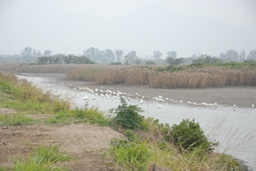LPPLS: A unified failure model for landslides, rockbursts, glaciers, and volcanoes
Published in Earth & Environment and Civil Engineering

The Challenge: Forecasting Catastrophic Events
Catastrophic failure occurs in a wide spectrum of geological materials such as rock, soil, and ice, driving various extreme geohazards like landslides, rockbursts, glacier breakoffs, and volcanic eruptions. Forecasting these extreme events that threaten life and property is a fundamental goal of many disciplines, including geomechanics, seismology, glaciology, volcanology, and engineering. Despite decades of research, it remains a formidable challenge. A key obstacle lies in the intermittent rupture dynamics of heterogeneous materials: these erratic behaviours defy conventional time-to-failure models, which typically assume a smooth, monotonic progression towards failure.
LPPLS: A Unified Failure Model
Here, we propose the log-periodic power law singularity (LPPLS) model that encapsulates the intermittent acceleration-deceleration sequences within a single unified failure framework. Rooted in statistical physics, the LPPLS model captures the partial breakdown of the symmetry of continuous scale invariance to discrete scale invariance that is inherent to the non-monotonic and intermittent dynamics of damage and rupture processes in heterogeneous materials. Thus, the LPPLS model leverages the oscillatory patterns in rupture dynamics, transforming them from traditionally perceived nuisances or noises into essential components of the predictive framework.

To demonstrate the superiority of our LPPLS-based unified failure model over the conventional power law singularity model, we compiled a comprehensive global dataset of 109 catastrophic geohazard events, including landslides, rockbursts, glacier breakoffs, and volcanic eruptions, spanning seven continents over the past century. This dataset covers different types of monitoring data, such as geodetic observations, geophysical records, and geochemical measurements. By examining the model performance based on a comprehensive suite of evaluation metrics, we showed that the LPPLS model significantly outperforms the conventional approach, offering a robust and versatile framework for describing the complex rupture behavior of diverse geomaterials such as rock, soil, and ice at the site scale. In addition to the broad applicability to diverse geohazards, we have also demonstrated that this unified failure model can be applied to various observables (e.g., surface displacement, tunnel closure, energy release, rift length, earthquake count, angular change, and gas emission) recorded by different instruments (e.g., extensometers, reflectors, tiltmeters, closuremeters, satellites, LiDAR, synthetic aperture radar, Global Positioning System, pressure recorders, and seismic/geochemical monitoring networks).
What is Next?
Our results indicate that the LPPLS-based unified failure model is general and robust, with great potential to help enhance existing early warning systems and mitigate geohazard risks. Much like frequency modulation (FM) systems that "lock in" on oscillatory components to extract signals from noise, this unified failure model locks into the intermittent log-periodic patterns embedded in the data. This approach enables a deeper understanding of the ongoing damage process and yields more reliable estimates of the critical time of failure. By leveraging the log-periodic oscillatory behavior combined with the failure singularity, the model enhances the assessment and prediction of rupture phenomena with greater accuracy than traditional methods. Our future work will focus on implementing this unified failure model for prospective forecast of catastrophic events.
Follow the Topic
-
Communications Earth & Environment

An open access journal from Nature Portfolio that publishes high-quality research, reviews and commentary in the Earth, environmental and planetary sciences.
Related Collections
With Collections, you can get published faster and increase your visibility.
Geology of the Moon
Publishing Model: Hybrid
Deadline: Jan 31, 2026
Drought
Publishing Model: Hybrid
Deadline: Dec 31, 2025





Please sign in or register for FREE
If you are a registered user on Research Communities by Springer Nature, please sign in